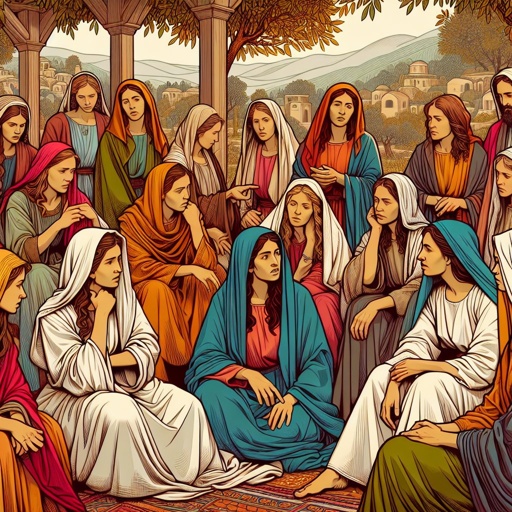The Annunciation To Mary Artwork
Explore The Annunciation To Mary through paintings, pictures, drawings, digital art, illustrations, wallpapers, photos, prints & more.

Luke 1:32

Luke 1:32

Mary

Luke 1:32

Mark 15:47 - "And Mary Magdalene and Mary the mother of Joses beheld where he was laid."

Matthew 27:55-56 - "And many women were there beholding afar off, which followed Jesus from Galilee, ministering unto him: Among which was Mary Magdalene, and Mary the mother of James and Joses, and the mother of Zebedee's children."

Jesus and Mary

Jesus and Mary

Mary and Jesus

Mary and Jesus

Jesus and Mary

Mary and Jesus

Mary and Jesus

Jesus and Mary

Matthew 27:61 - "And there was Mary Magdalene, and the other Mary, sitting over against the sepulchre."

Luke 1:30-31 - "But the angel said to her, “Do not be afraid, Mary; you have found favor with God. You will conceive and give birth to a son, and you are to call him Jesus."

Matthew 27:56 - "Among which was Mary Magdalene, and Mary the mother of James and Joses, and the mother of Zebedee's children."

Mark 15:40 - "There were also women looking on afar off: among whom was Mary Magdalene, and Mary the mother of James the less and of Joses, and Salome;"

John 19:25 - "¶ Now there stood by the cross of Jesus his mother, and his mother's sister, Mary the wife of Cleophas, and Mary Magdalene."

Mark 16:1 - "And when the sabbath was past, Mary Magdalene, and Mary the mother of James, and Salome, had bought sweet spices, that they might come and anoint him."

Luke 24:10 - "It was Mary Magdalene, and Joanna, and Mary the mother of James, and other women that were with them, which told these things unto the apostles."

Matthew 28:1 - "In the end of the sabbath, as it began to dawn toward the first day of the week, came Mary Magdalene and the other Mary to see the sepulchre."

Jesus and Mary Magdalene, illustrating forgiveness and redemption.

Jesus and Mary Magdalene, illustrating forgiveness and redemption.

Jesus and Mary Magdalene, illustrating forgiveness and redemption.

Jesus with Mary and Martha, contrasting service and contemplation.

Jesus with Mary and Martha, contrasting service and contemplation.

Matthew 1:16 - "And Jacob begat Joseph the husband of Mary, of whom was born Jesus, who is called Christ."

Luke 1:30-31 - "But the angel said to her, “Do not be afraid, Mary; you have found favor with God. You will conceive and give birth to a son, and you are to call him Jesus."

Luke 1:46 - "And Mary said, My soul doth magnify the Lord,"